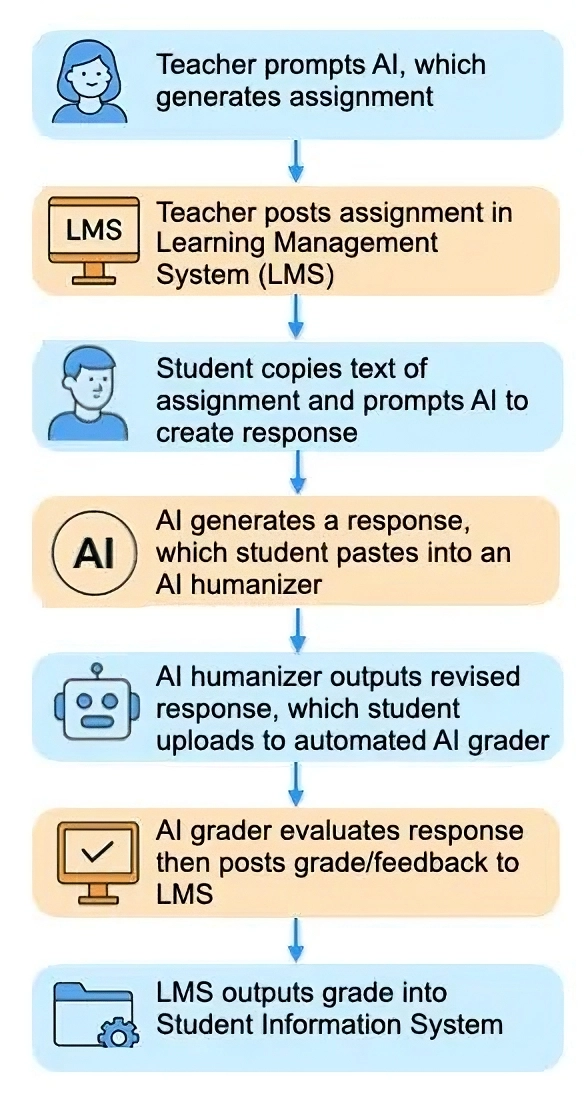The Classroom AI Doom Loop

Recently, I convened a few people who I thought might be interested in writing something in response to a call from UNESCO for ‘think pieces’ around the subject of AI and the Future of Education: Disruptions, Dilemmas and Directions. You can read mine here and — whether or not the six of us have ours published — we’re planning to host a roundtable in early June to discuss our work.
I had a look around the UNESCO Ideas LAB site, which is where the think pieces would be published, and came across this excellent article by David Ross. He coins the phrase “the classroom AI doom loop” which he illustrates with the diagram I’ve included above.
It’s this that concerns me about AI. Not the individual use, but its unthinking systemic embedding in an outdated system of assessment. You can blame the students. You can blame the teachers. But really, we need to step back and ask “what are we doing here?” and “what should we be doing here?” You can’t uninvent technologies, and banning the use of generative AI just feels like a game of whack-a-mole on steroids.
No humans were harmed in this process because humans were only ancillaries to the process. And this is today’s technology. By the beginning of the next school year, agentic AIs such as Manus, Convergence or Responses API will be able to eliminate humans from any involvement in the knowledge transmission cycle. If the last 100 years of technological innovation have taught us anything, it’s that if something can be automated, it will be automated.
Is this scenario really that far-fetched? Students and parents are busy and stressed. They hate homework because they have to give up their evenings and weekends to do it or monitor it. Teachers are busy and stressed. They hate homework because they have to give up their evenings and weekends creating it and then grading it. There is no conspiracy here, but humans will all choose to use AI for similar reasons.
Wouldn’t it be ironic if the solution to the industrial model of knowledge transmission is in fact automation?
[…]
We have come to the inflection point where we can automate most elements of knowledge transmission. I’m not sure if that is a good idea. But before we take up residence in the Classroom AI Doom Loop, we should have a serious policy discussion about the purpose of education. If a major function of education can be automated, it’s probably not human enough.
Source: UNESCO Ideas LAB
Image: original post (enhanced using upscale.media)